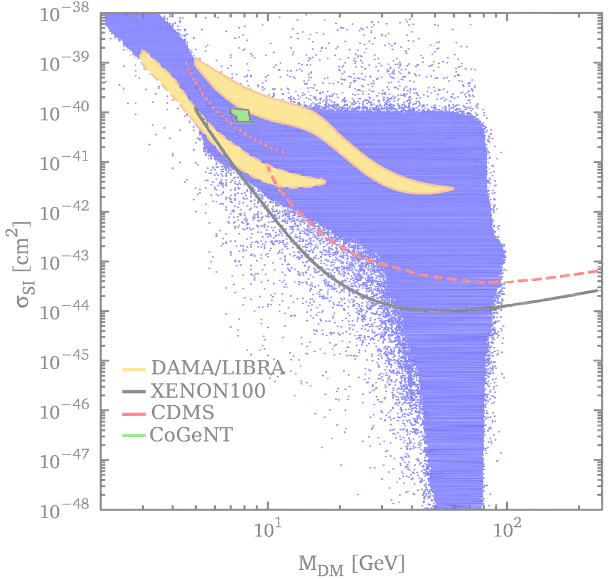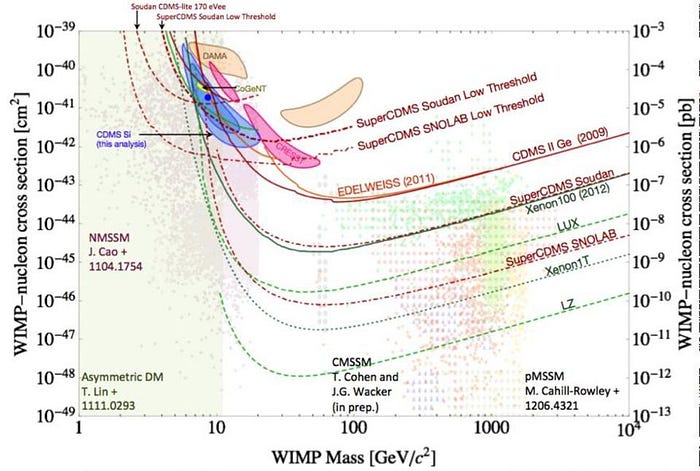Peak Warming Man said:
PermeateFree said:
>>Few things are as mysterious as dark matter, the strange substance that appears to outnumber ordinary matter by a ratio of five to one. Now, a physicist from Johns Hopkins University has outlined a new theory that helps to explain the stuff but at the same time makes it seem even more bizarre. According to the study, dark matter may have originated before the Big Bang.<<
https://newatlas.com/dark-matter-appear-before-big-bang/60960/
Very interesting but an outlier theory for now.
> As the universe grew, tiny fluctuations in the density of dark matter meant that in regions where there was more mass, expansion slowed down. The gravity of dark matter’s extra mass attracted normal matter to the area, and as the density of that matter grew it eventually collapsed and fired up into the first stars. This explains why stars tend to gather in galaxies, and galaxies in turn gather into clusters. … If dark matter were truly a remnant of the Big Bang, then in many cases researchers should have seen a direct signal of dark matter in different particle physics experiments already.
That much is probably true.
> So what’s the alternative? According to Tenkanen, dark matter may predate the Big Bang itself.
Need to check if he’s advocating MOND. That would pre-date the big bang. No, it’s not that.
> Dark matter arose during the period of cosmic inflation.
That’s different. That’s not before the big bang, but it is long before the first particle of ordinary matter. Is he advocating axions, which are the only particles of low enough energy to be created before ordinary matter? Or sterile neitrinos?
> As the universe expanded rapidly, it produced a type of particle called scalars, which have a spin integer of zero. Only one type of scalar particle has been discovered so far – the famous Higgs boson – but according to Tenkanen, dark matter may fall into this category too.
This is worth looking into further. In particle physics there are already both scalar and psuedoscalar particles, scalar is spin zero and even parity, pseudoscalar is spin zero and odd parity. Scalar mesons are true scalar but are composite particles.
“Ever since Jaffe first suggested the existence of tetraquark multiplets in 1977, the lightest scalar mesons have been interpreted by some theorists to be possible tetraquark states. The tetraquark interpretation works well with the MIT Bag Model of QCD, where the scalar tetraquarks are actually predicted to have lower mass than the conventional scalar mesons. This picture of the scalar mesons seems to fit experimental results well in certain ways, but often receives harsh criticism for ignoring unsolved problems”.
Then there are scalar bosons, the only fundamental scalar boson in the Standard Model of particle physics is the Higgs boson, composite scalar bosons include the alpha particle (helium nucleus) and pion.
Ah, now i’m getting closer, from 2015:
“Among the extensions of the Standard Model (SM) explaining the DM relic abundance, the simplest one is the inert dark matter, where a scalar field is added to the Standard Model which is stabilized by a Z2 symmetry.” From https://iopscience.iop.org/article/10.1088/1742-6596/651/1/012017/meta
> this can lead to the direct detection of the DM in the elastic scattering with the nucleons.
So this form of dark matter can’t avoid conventional detectors either.
Have a close look at Figure 3 from that paper. Although most possibilities for a dark matter particle of this type have already been ruled out by the Xenon100 dark matter search, there is a significant narrow band of dark matter particle masses centred on 60 GeV (40 to 80 GeV) that can’t be easily ruled out.
How does this tie in with creation during the inflationary epoch? Not sure.


